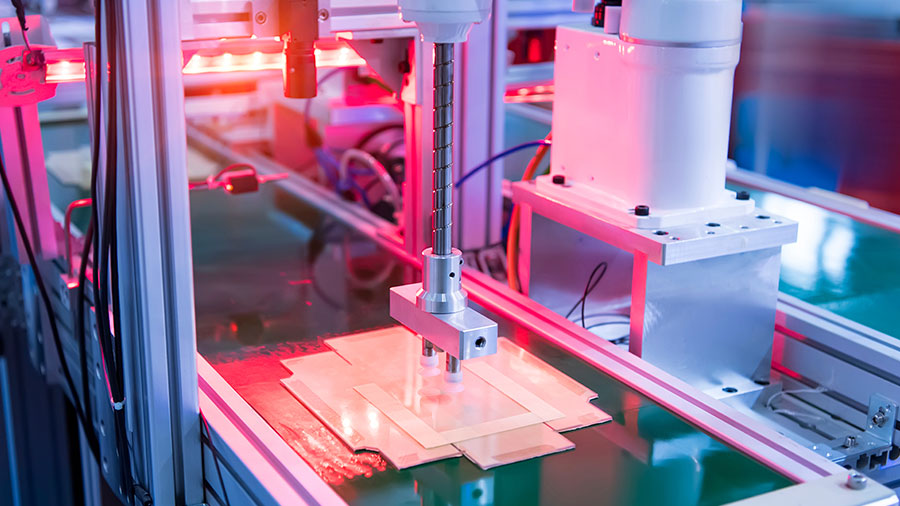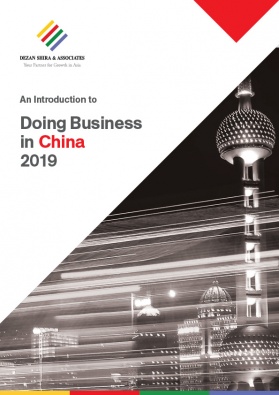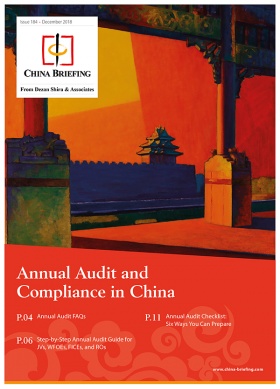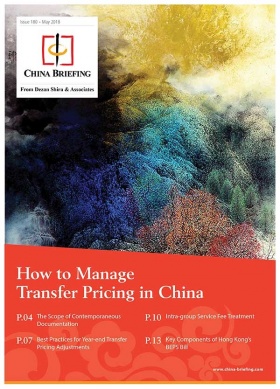China’s Machinery Industry: Structural Reforms Bring New Incentives, Tax Breaks

China’s machinery industry has maintained growth at above 30 percent over the past decade. Now, as China invests in upstream segments and high-tech manufacturing, new opportunities are emerging within the machinery industry’s sub-sectors.
Growth sectors include the production and upgrade of industrial robotics, advanced machine tools, and agricultural machinery. China’s industrial robot production, for instance, is expected to grow by 38 percent through 2018.
Overall, forecasts show that China’s machinery production will grow at a compound annual growth rate of 7.5 percent for the next five years.
In this article, we provide an overview of China’s machinery industry, policy initiatives affecting the industry, and challenges and opportunities for foreign investors.
China’s mature machinery market
According to data from the China Machinery Industry Federation (CMIF), the industry’s main business revenue jumped 9.47 percent to RMB 24.54 trillion (US$3.62 trillion) in 2017, while Chinese machinery manufacturers’ profits increased 10.74 percent year-on-year to reach RMB 1.71 trillion (US$272.21 billion).
China is one of the leading machinery exporters in the world. Total exports of China’s machinery industry rose 8.33 percent to RMB 2.75 trillion (US$406 billion) in 2017.
According to the EU SME Centre, foreign-invested enterprises contribute to 49.9 percent of the total export value. Chinese private enterprises and state-owned enterprises, respectively, shared 38.6 percent and 11.5 percent of China’s total machinery exports.
Chinese small and medium enterprises (SMEs) dominate the country’s low-end machinery market due to their cost-cutting structures and price-based competition.
In comparison, Chinese state-owned enterprises, such as the China Machinery Engineering Corporation, possess significant intellectual property (IP) assets and brand building resources to prevail in the high-end machinery market and strategic sub-sectors.
The leading sub-sector for China’s machinery industry is power generating machinery, which earned 24 percent of the industry’s total revenue and reached RMB 4.8 trillion (US$708.46 billion) in the first three quarters of 2018.
Other key sub-sectors in the industry include basic components, heavy machinery, and machine tools, accounting for nine percent, 5.4 percent, and 4.7 percent, respectively.
Geographically, China’s machinery industry is concentrated in the eastern coastal regions. Jiangsu tops China’s machinery industry output, followed by Shandong and Guangdong provinces.
However, over the last few years, the Chinese machinery industry has been gradually moving inwards – to central and western China. Under the Belt and Road Initiative, we expect an increase in machinery output from these regions, as China seeks to develop its inland regions and export to Eurasia via land routes.
Structural reforms open prospects in China’s machinery industry
In recent years, the Chinese government has rolled out a series of ongoing structural reforms to better equip the machinery industry to simultaneously move up the value chain while addressing the challenges of an aging population and severe air pollution.
Sub-sectors within China’s machinery industry, including robotics, machine tools, and agricultural machinery, will see greater investment in capacity for a transformation into high-end production.
Machine tools
While China continues to import high-end machine tools from developed countries in the near term, the government is keen to raise the localization rate of Chinese mid-range and high-end computer numerical control (CNC) machine tools to 80 percent by 2020.
CNC machining involves the use of computers to control machine tools in the manufacturing process. It facilitates the efficiency of China’s strategic industries, such as aerospace, telecommunications, and shipbuilding industries.
China’s high-end CNC system market will have a demand for 12 million units – with a market value in excess of RMB 300 billion (US$44.16 billion) – between 2016 to 2020.
China is the largest producer, consumer, and importer of machine tools in the world. China’s imports of machine tools reached US$8.74 billion in 2017, most of which are CNC machinery and core components from Germany, Italy, Japan, and South Korea.
This is why the government’s growth targets need to be considered more aspirational than achievable. Presently, less than 20 Chinese companies can manufacture CNC machine tools and only 30 percent of China’s machine tools make use of CNC systems. In developed countries, the CNC system facilitates more than 70 percent of their machine tools.
Many municipal governments in China have released policies to encourage R&D investment in the sector as well as compete with key local enterprises, such as Shenyang Machine Tools, China’s largest machine tools manufacturer.
Agricultural machinery
China has a plan to produce 90 percent of its farming equipment and hold a 60 percent share in the global high-end agricultural machinery market by 2025.
China sees the adoption of advanced technologies and methods as critical to improve farming productivity and secure environmental protection.
Nevertheless, these ambitions appear to be stretched as China only produces 15 percent of the agricultural machinery’s global output and is heavily reliant on the import of high-end farming equipment.
The Chinese government has thus issued subsidy policies to promote farm mechanization.
It grants subsidies to encourage farmers to utilize high-end equipment, such as tractors, combine harvesters, and cotton pickers. Both Chinese manufactures and non-Chinese brands that manufacture in China are eligible for the subsidy scheme.
In addition, the technologies of mechanized planting, vertical axis harvesting machinery, and other weak links are also priority growth sectors for China.
Market access barriers and IP protection
Since China’s entry into the WTO, the country’s machinery sector has been open to foreign investment, though subject to certain restrictions.
For instance, the Chinese government imposes a number of ownership restrictions to power generation equipment manufacturers. Foreign companies can enter the sector only by establishing joint ventures (JVs) with domestic partners.
Some sectors also require more than 50 percent Chinese ownership, such as in the manufacture of electric machinery and equipment.
In conjunction with its ambitious Made in China 2025 strategy, foreign companies have worried about the implications of China’s hunger for foreign technologies. Most recently, the US government flagged Chinese practices of forced technology transfer through administrative measures in its trade war talks with China.
Under increased international pressure, the Chinese government will be deepening liberalization measures to bolster business confidence in the country. China is likely to ease ownership limits on foreign JVs in strategic sectors and will strengthen protection with respect to intellectual property rights.
Foreign machinery manufacturers should, in turn, develop proper IP protection strategies to prevent the illegal copying or distribution of their products.
A large demand for technology transfers
As illustrated above, China has a huge demand for technology transfers from developed countries in the high-end machinery sector.
Leading foreign machinery manufacturers can make use of these opportunities to export, both, equipment and expertise that is urgently-needed by China.
The Chinese government is offering financial and tax incentives for introducing advanced technologies from developed countries. For instance, China has exempted import duties and related value-added tax (VAT) for the import of key R&D equipment, raw materials, and components. Since November 1, 2018, the average tax rate of imported machine tools was reduced from 12.2 percent to 8.8 percent.
To enter the Chinese market, foreign companies must find potential Chinese distribution partners.
Seeking professional commercial and research services, participating in sector-specific exhibitions, and utilizing business matchmaking programs will allow foreign machinery manufacturers to eliminate networking uncertainty, facilitate transparent interactions, protect IP, and make sustainable investments.
About Us
China Briefing is produced by Dezan Shira & Associates. The firm assists foreign investors throughout Asia from offices across the world, including in Dalian, Beijing, Shanghai, Guangzhou, Shenzhen, and Hong Kong. Readers may write china@dezshira.com for more support on doing business in China.
- Previous Article Manufacturing Regions in China Struggle to Meet Growth Targets
- Next Article China Releases New Draft List of Encouraged Industries for Foreign Investment









